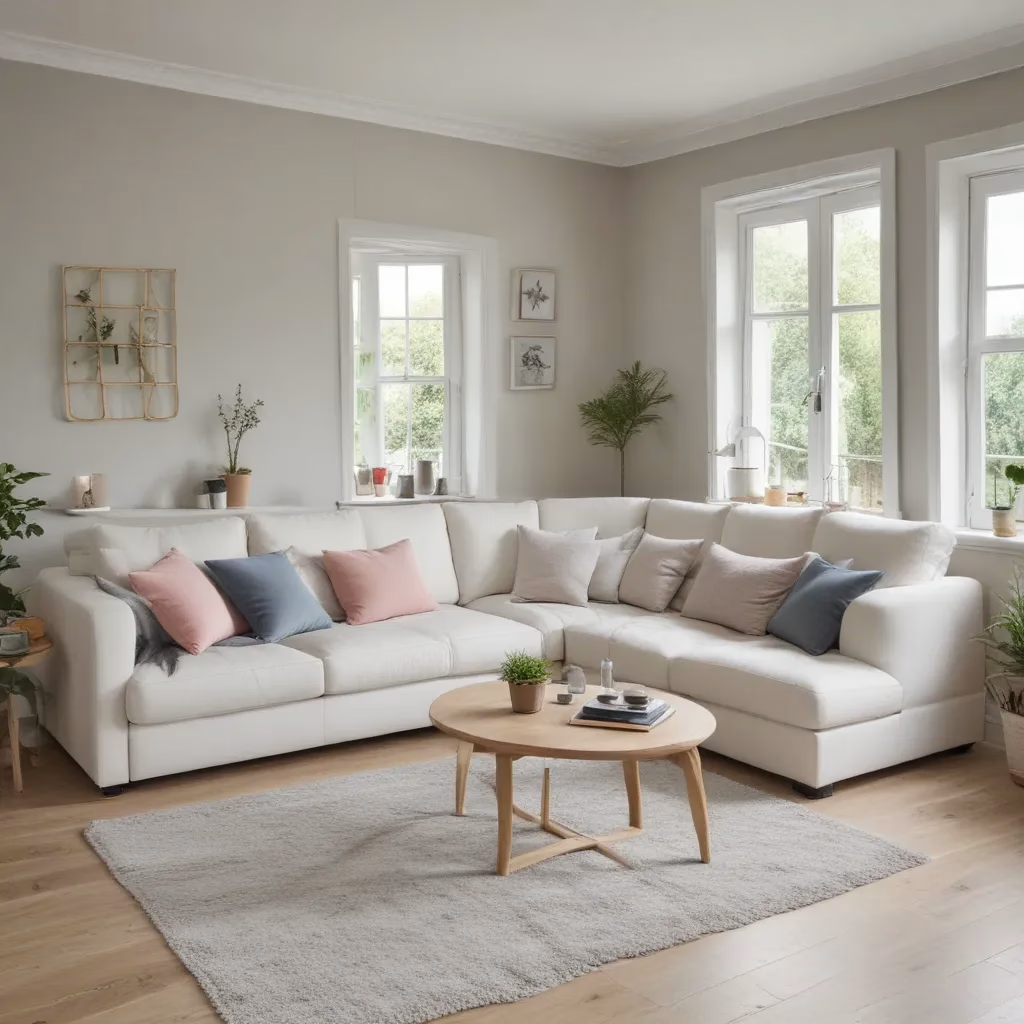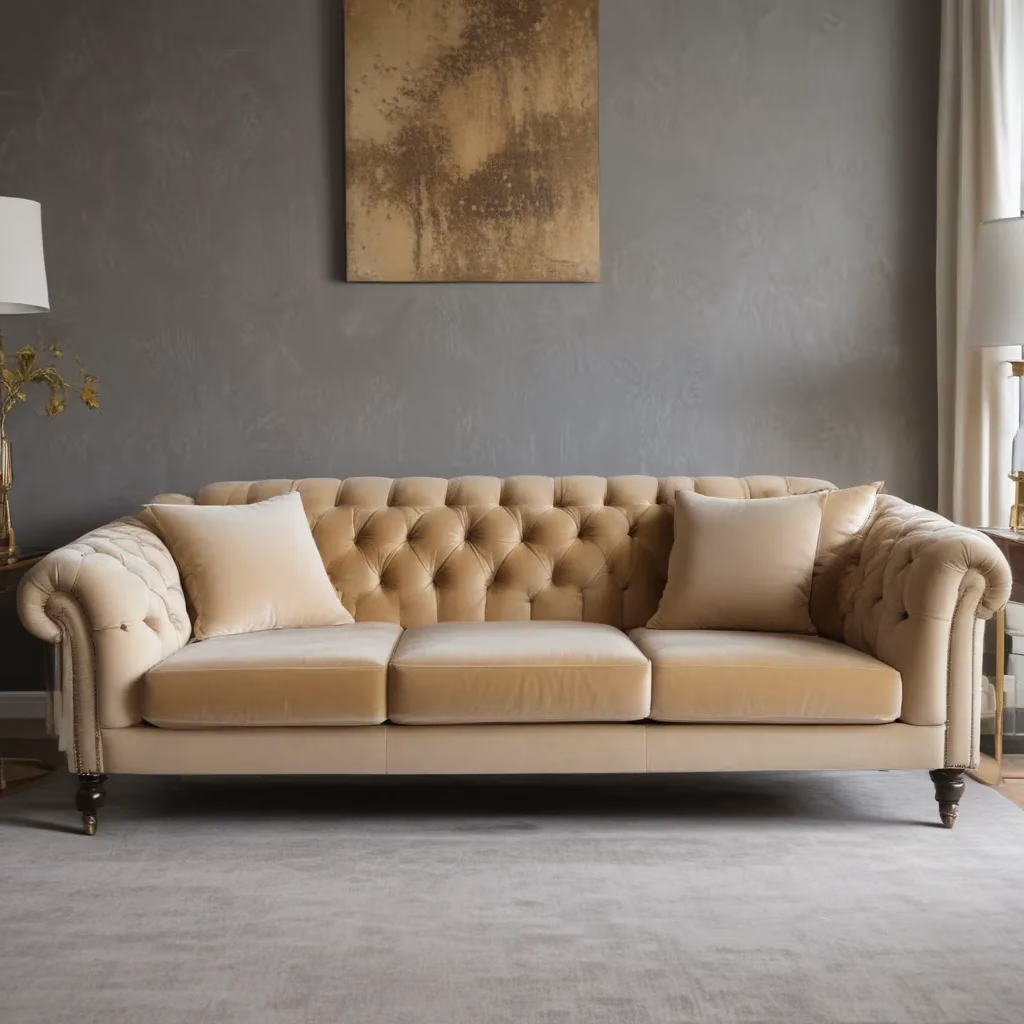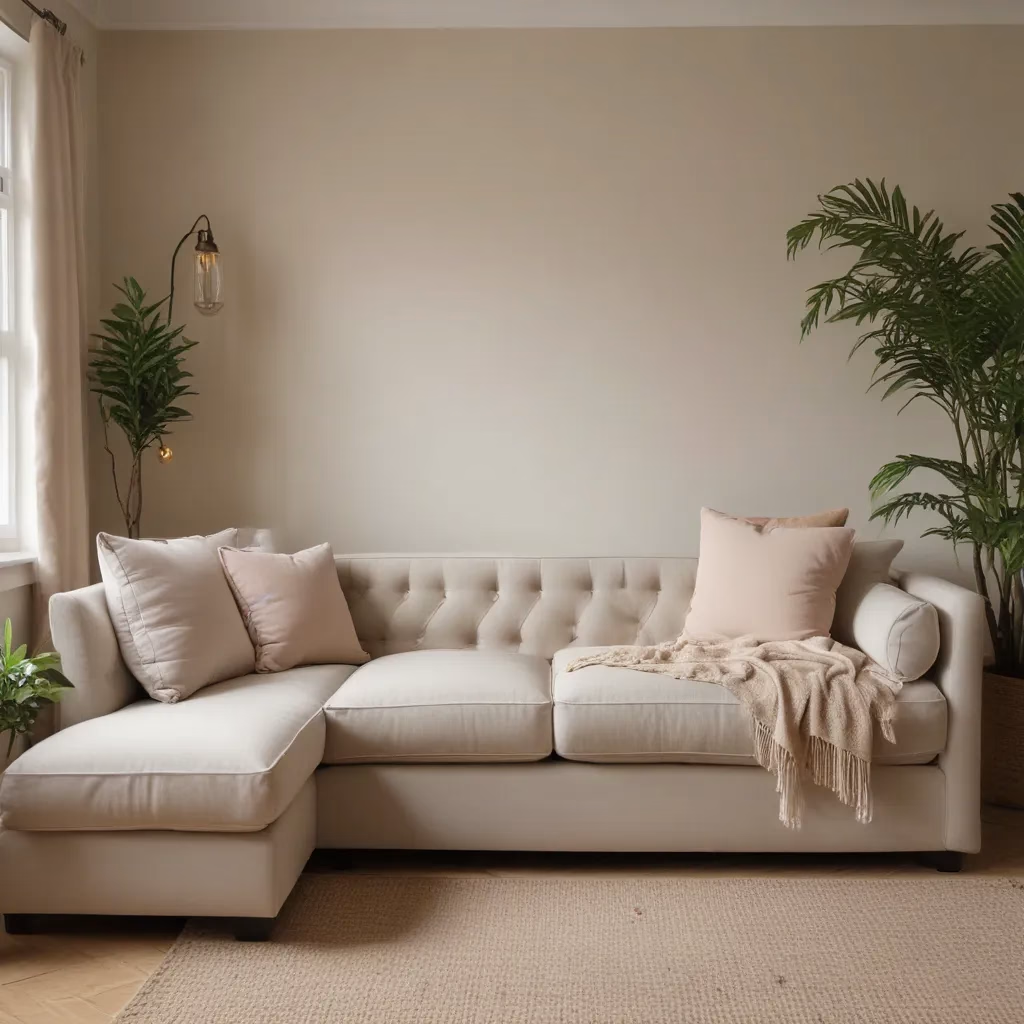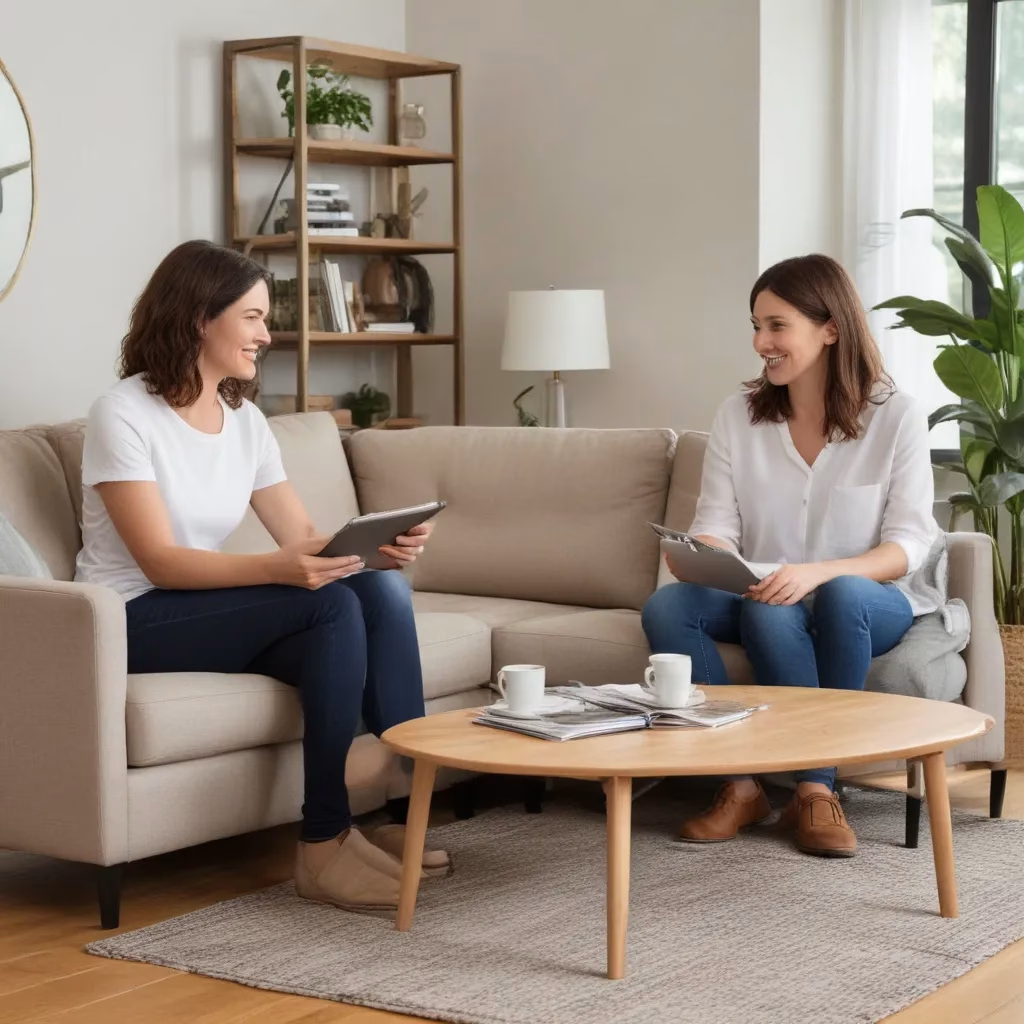
Living in a smaller home or studio apartment comes with unique interior design challenges. However, with the right sofa selection and strategic layout, you can create a visually cohesive and functional living space that feels both comfortable and stylish. As an experienced furniture consultant and interior design writer, I’ve learned that the key to maximising compact areas lies in choosing space-saving sofa designs and arranging them in a way that enhances flow and natural light.
Fabric and Upholstery Selection
When it comes to furnishing a small room, the fabric and upholstery of your sofa play a crucial role in creating the desired ambiance. Lighter, neutral-toned fabrics like linen or microfiber can make a space feel more open and airy, while textured or patterned upholstery can add visual interest and personality.
Consider your lifestyle and the level of durability you’ll need. If you have pets or young children, stain-resistant and easy-to-clean fabrics like performance velvet or Olefin may be the practical choice. On the other hand, luxurious cotton or wool blends can lend a cosy, elegant feel to a compact living room.
The texture of the upholstery is also an important factor. Smooth, shiny fabrics like satin can make a room appear larger, while plush, tufted or textured upholstery can create a sense of warmth and depth. Finding the right balance between form and function is key when selecting the perfect sofa for your small space.
Living Room Layout Tips
Once you’ve chosen the ideal sofa, it’s time to consider how to arrange it within your compact living room. One of the most effective space-saving strategies is to opt for a sectional or L-shaped sofa, which can maximise seating while occupying a smaller footprint. These configurations allow you to tuck the sofa into a corner or against a wall, freeing up valuable floor space.
Another layout tip is to position your sofa perpendicular to the main entry point, creating a welcoming and efficient flow. This arrangement can also help to visually divide the room into distinct zones, such as a conversation area and a reading nook.
When it comes to maximising natural light, be mindful of where you place your sofa. Positioning it parallel to windows or placing it against a light-coloured wall can help to reflect and amplify the available illumination, making the room feel more open and airy.
Remember to strike a balance between function and aesthetics. While it’s important to optimise the layout for practical considerations, don’t forget to infuse your personal style. Carefully curate the placement of accent chairs, coffee tables, and ottomans to create a cohesive and visually appealing living space.
Sofa Cleaning and Maintenance
Maintaining the longevity and appearance of your compact sofa is essential, especially in a small space where it’s likely to be a focal point. Regular vacuuming and spot cleaning can help to keep your upholstery looking its best. For tougher stains or deeper cleaning, consider using a professional upholstery cleaning service to double-check that your sofa stays in top condition.
When it comes to daily care, be mindful of the fabric’s specific cleaning requirements. Some materials, like microfiber, may require special cleaning solutions, while others, like leather, may need a specific conditioning product. Refer to the manufacturer’s recommendations to double-check that you’re caring for your sofa correctly.
Styling for Comfort and Aesthetics
Once you’ve optimised the layout and maintained the condition of your compact sofa, it’s time to focus on styling and accessorising the space. Incorporating decorative throws, scatter cushions, and area rugs can help to create a cosy and inviting atmosphere, while also adding visual interest and texture to the room.
Consider layering different patterns and textures to add depth and dimension to your small living area. A neutral-toned sofa can serve as a blank canvas for you to experiment with pops of colour or bold graphic prints in your accessories.
Lastly, don’t forget to incorporate lighting to enhance the ambiance. Floor lamps, table lamps, and sconces can help to illuminate the space and create a warm, welcoming glow – perfect for a cosy night in.
Furniture Buying Guides
Understanding Sofa Dimensions
When selecting a sofa for a compact room, it’s crucial to measure your available space accurately. Consider the depth, width, and height of the sofa, as well as any clearance needed for walkways or access points. Opt for a proportionate piece that fits your room without overwhelming it.
Choosing the Right Sofa Style
From contemporary minimalist designs to traditional button-tufted silhouettes, there’s a wide range of sofa styles to choose from. Carefully consider your personal aesthetic preferences and how the sofa will integrate with your existing décor. If you’re working with an open-concept layout, selecting a cohesive sofa can help to tie the whole space together.
Sofa Materials and Construction
The quality of a sofa’s frame and cushions can significantly impact its longevity and comfort. Look for hardwood or engineered wood frames, which are more durable than particleboard or metal. When it comes to cushions, high-density foam or down-blend fillings can provide superior support and softness.
Additionally, consider the sustainability of the materials used, such as eco-friendly fabrics or FSC-certified wood. These features not only contribute to the long-term performance of your sofa but also align with your personal values and environmental concerns.
By carefully considering the fabric, layout, maintenance, styling, and construction of your compact sofa, you can create a small living space that is both comfortable and visually appealing. With the right space-saving furniture and design strategies, you can maximise the potential of your compact room and enjoy a stylish, functional home.
Example: Living Room Makeover Series with Modular Sectionals



